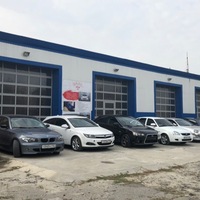https://facebook.com/298276320198577_2964795106880005
Доцент Университета штата Юта Стерлинг Боун решил выяснить, что будет, если спрашивать клиентов не о недостатках, а о достоинствах компании? Он подозревал, что сместив фокус опроса с поиска ошибок на воспоминания о позитивном опыте сотрудничества, можно расположить клиентов и поднять продажи. И он был абсолютно прав.
Сила позитивного настроя
Гипотеза Боуна возникла не на пустом месте. Классические исследования «эффекта простого измерения», проведенные еще в 80-х, доказали, что опросы можно использовать не только как возможность выслушать клиентов, но и как способ тонкого воздействия на них.
В ходе своих экспериментов Боун с коллегами установили, что если начать стандартное исследование удовлетворенности клиентов с просьбы рассказать, что им понравилось во время последнего обращения (или нравится в ходе сотрудничества в целом), это заставит клиентов чаще обращаться к вашим услугам и тратить на них больше денег в течение следующего года. Просьба может выглядеть так: «Какие плюсы вы отметили во время последнего визита в наш магазин?» Этот прием авторы исследования назвали запросом «открытого позитивного отклика».
Они отмечают два момента, которые нужно соблюсти для достижения нужного эффекта. Во-первых, запрос должен открывать анкету и стоять перед всеми остальными вопросами. Во-вторых, он должен быть непременно открытым, без предложенных вариантов ответа или шкалы оценок. Клиент должен подумать над ответом и высказаться самостоятельно.
Что показали исследования → https://zen.yandex.ru/media/id/5a5dd7364bf1612ae725965f/kak-podniat-prodaji-s-pomosciu-oprosa--5ad6cc4b9b403ce9bb135b72
(Нина Войнова)
Сила «открытого позитивного отклика»
Доцент Университета штата Юта Стерлинг Боун решил выяснить, что будет, если спрашивать клиентов не о недостатках, а о достоинствах компании? Он подозревал, что сместив фокус опроса с поиска ошибок на воспоминания о позитивном опыте сотрудничества, можно расположить клиентов и поднять продажи. И он был абсолютно прав.
Сила позитивного настроя
Гипотеза Боуна возникла не на пустом месте. Классические исследования «эффекта простого измерения», проведенные еще в 80-х, доказали, что опросы можно использовать не только как возможность выслушать клиентов, но и как способ тонкого воздействия на них.
В ходе своих экспериментов Боун с коллегами установили, что если начать стандартное исследование удовлетворенности клиентов с просьбы рассказать, что им понравилось во время последнего обращения (или нравится в ходе сотрудничества в целом), это заставит клиентов чаще обращаться к вашим услугам и тратить на них больше денег в течение следующего года. Просьба может выглядеть так: «Какие плюсы вы отметили во время последнего визита в наш магазин?» Этот прием авторы исследования назвали запросом «открытого позитивного отклика».
Они отмечают два момента, которые нужно соблюсти для достижения нужного эффекта. Во-первых, запрос должен открывать анкету и стоять перед всеми остальными вопросами. Во-вторых, он должен быть непременно открытым, без предложенных вариантов ответа или шкалы оценок. Клиент должен подумать над ответом и высказаться самостоятельно.
Что показали исследования → https://zen.yandex.ru/media/id/5a5dd7364bf1612ae725965f/kak-podniat-prodaji-s-pomosciu-oprosa--5ad6cc4b9b403ce9bb135b72
(Нина Войнова)
Сила «открытого позитивного отклика»
https://facebook.com/298276320198577_2964795106880005
The assistant professor at the University of Utah, Sterling Bone, decided to find out what would happen if customers were asked not about the flaws but about the merits of the company? He suspected that by shifting the focus of the survey from finding errors to memories of positive cooperation experiences, it was possible to attract customers and increase sales. And he was absolutely right.
The power of a positive attitude
Bone's hypothesis did not arise from scratch. Classical studies of the “simple measurement effect”, conducted back in the 80s, proved that surveys can be used not only as an opportunity to listen to customers, but also as a way of subtle impact on them.
In the course of their experiments, Bone and colleagues found that if you start a standard study of customer satisfaction with a request to tell us what they liked during the last call (or like during the cooperation as a whole), this will make customers use your services more often and spend more on them money over the next year. The request may look like this: “What are the advantages you noted during your last visit to our store?” The authors of the study called this technique a request for an “open positive response."
They note two points that must be observed to achieve the desired effect. Firstly, the request should open the questionnaire and face all other questions. Secondly, it must certainly be open, without the proposed answer options or rating scale. The client should think about the answer and speak independently.
What the studies showed → https://zen.yandex.ru/media/id/5a5dd7364bf1612ae725965f/kak-podniat-prodaji-s-pomosciu-oprosa--5ad6cc4b9b403ce9bb135b72
(Nina Voinova)
The power of an “open positive response”
The assistant professor at the University of Utah, Sterling Bone, decided to find out what would happen if customers were asked not about the flaws but about the merits of the company? He suspected that by shifting the focus of the survey from finding errors to memories of positive cooperation experiences, it was possible to attract customers and increase sales. And he was absolutely right.
The power of a positive attitude
Bone's hypothesis did not arise from scratch. Classical studies of the “simple measurement effect”, conducted back in the 80s, proved that surveys can be used not only as an opportunity to listen to customers, but also as a way of subtle impact on them.
In the course of their experiments, Bone and colleagues found that if you start a standard study of customer satisfaction with a request to tell us what they liked during the last call (or like during the cooperation as a whole), this will make customers use your services more often and spend more on them money over the next year. The request may look like this: “What are the advantages you noted during your last visit to our store?” The authors of the study called this technique a request for an “open positive response."
They note two points that must be observed to achieve the desired effect. Firstly, the request should open the questionnaire and face all other questions. Secondly, it must certainly be open, without the proposed answer options or rating scale. The client should think about the answer and speak independently.
What the studies showed → https://zen.yandex.ru/media/id/5a5dd7364bf1612ae725965f/kak-podniat-prodaji-s-pomosciu-oprosa--5ad6cc4b9b403ce9bb135b72
(Nina Voinova)
The power of an “open positive response”

У записи 1 лайков,
0 репостов,
62 просмотров.
0 репостов,
62 просмотров.
Эту запись оставил(а) на своей стене Илья Рабчёнок






















